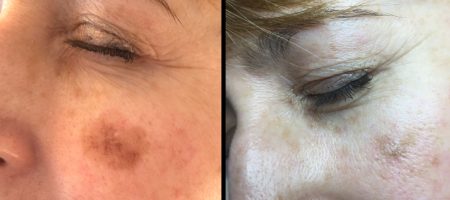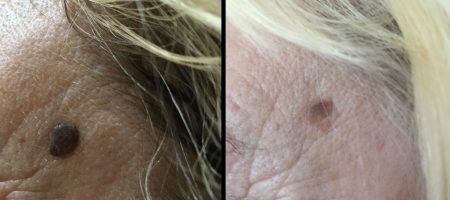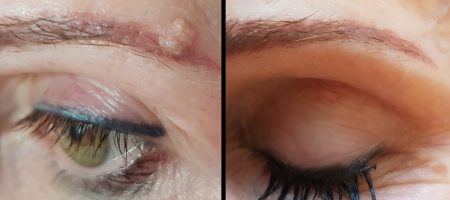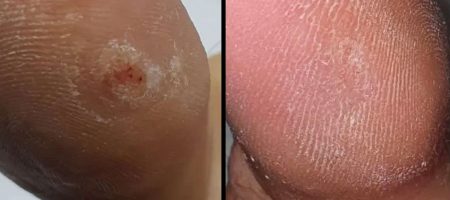Cryotherapy
For the treatment of warts, veruccas, pigmentation and age spots
Pigmentation/Age Spots
Melanin is produced by specialised cells in the basal layers of the epidermis, called melanocytes.
Pigmentation occurs when skin increases the production of melanin, which is the pigment cell found at the base of the epidermis. When activated or through exposure to sunlight or ultra violet light, our natural melanin production is increased to prevent the sun’s harmful rays from passing into the deeper layers of the epidermis. Harmful rays can cause mutation in the skin stem cells which could result in the production of malignant cells. Hyperpigmentation of the skin is a key sign of photo damage and can lead to signs of ageing.
Hyperpigmentation may occur in spots (macules) or patches which appear darker than the surrounding skin. In such areas some melanocytic cells overproduce pigment. This is a very common condition and affects all skin types.
Superficial pigmentation such as minor sun damage, (‘age’ spots or solar lentigo) are easily treated pigment with cryotherapy. The results will usually be permanent as long as the client avoids further sun damage by using high factor sunblock or by covering up.
How does it work?
The treatment of hyperpigmentation can be straightforward by freezing the area to cause superficial Cryo necrosis of the affected pigmented cells. This destroys only those cells containing the additional melanosomes and the healing process replaces them with new cells which will have normal amounts of melanosomes, thereby removing the hyper pigmented area.
How long before results can be seen?
Large patches will need several sessions of treatment, and sometimes this may take a few months to achieve the overall results, as the skin must be given time to return to normal after each treatment. The skin recovery time is normally between 4 to 6 weeks.
Warts & Verrucas
Warts and Verrucaes are the same thing. They are both viral infections of the stratum corneum (the outermost layer of the epidermis), and they are classified dermatologically as ”Viral induced tumours of stratum corneum cells”.
When they are treated, the aim is to destroy the cells that contain the virus and hence the viral particles as well. Sometimes however if there are viable virus particles remaining, they can reinfect the stratum corneum cells and it then appears as if the wart/verrucae has returned.
The reinfection can cause stimulation in new cells (the virus reinvigorates the dead stratum corneum cells which then start reproducing, hence the ‘tumour’ definition) and the wart/verrucae appears to be bigger than before.
How does it work?
When people use acids for treatment as in proprietary treatments, it is usually salicylic acid which breaks down the connections between skin cells resulting in tissue breakdown, but does not destroy the virus. This form of treatment requires many repeated applications to destroy the infected tissue and with it the virus, and is a very ineffective and inefficient method. Likewise covering the wart/verrucae with duct tape just macerates the skin and at best is no more effective than salicylic acid and at worst is just a placebo. Both methods can release viable virus causing reinfection.
How long before results can be seen?
Multiple treatments may be needed to get rid of the wart/verrucae, however, it is recommended that you do not treat the same area of skin more than 3 times with cryotherapy as there will be no further improvement.
If the virus is released through treatment you can get an immune response which in turn produces more antibodies to the virus. These will engulf and destroy the viral cells so often the wart/verrucae will clear away a few months after treatment due to this response.






